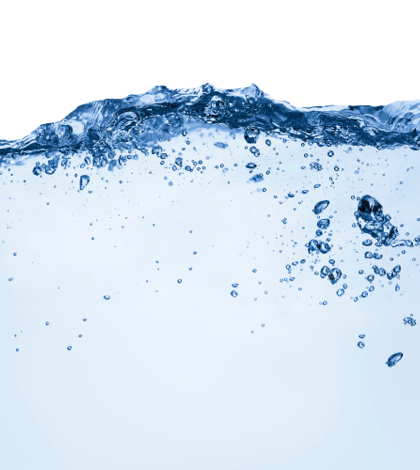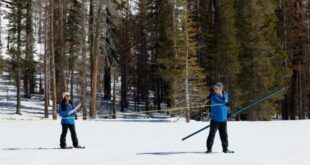Although the 2017 water year was the wettest on record for most of northern California and Central Valley Project (CVP) reservoirs were essentially full for the first time since California’s five-year drought ravaged the state, it’s a far different scenario, thus far, for Water Year (WY) 2018. The Bureau of Reclamation announced its initial 2018 water supply allocations for the CVP contractors on Tuesday describing the allocations as “very conservative.”
“Despite the historic rainfall last year, California’s lack of sufficient water storage forces us to operate on a year-to-year basis. The amount we can store in our reservoirs is not enough to get us through these very dry years,” said David Murillo, Reclamation’s Mid-Pacific Regional Director. “Given what we know today, and what we see in the forecast, we must be very conservative with our allocation. If this lack of rain and snow continues, we could very well be right back in drought operations. A situation like this really underscores the need for more storage in California.”
As of Feb. 15, the California Department of Water Resources (DWR) reports that the statewide average snow water equivalent in the Sierra Nevada was 4.3 inches (20 percent of the historical average). Rainfall is currently at approximately 60 percent of the historical average for the northern Central Valley.
As of Tuesday’s announcement by Reclamation, the initial allocations to CVP contractors is slated to be as follows:
South-of-Delta Contractors
- Agricultural water service contractors South-of-Delta will be allocated 20 percent of their contract total.
- Water service contractors South-of-Delta are allocated the greater of 70 percent of their historic use or public health and safety needs.
Friant Division Contractors
- Based upon Millerton Lake storage as well as current and forecasted hydrologic conditions in the Upper San Joaquin River Basin, the Friant Division contractors are allocated 30 percent of Class 1 supplies.
- For the San Joaquin River Restoration Project (SJRRRP), the current best forecast developed jointly by SJRRP and the South-Central California Area Office now indicates a “Critical-High” water year type.
Eastside Water Service Contractors
Eastside water service contractors (Central San Joaquin Water Conservation District and Stockton East Water District) are slated to receive 100 percent of their contract total.
Prior to Tuesdays announcements as above, Reclamation had on Feb. 15 notified the Sacramento River Settlement Contractors, San Joaquin River Exchange Contractors, San Joaquin Settlement Contractors, and Refuge Contractors that the forecasted inflow to Shasta Lake is currently greater than 3.2 million acre-feet and they are not currently in a “Shasta Critical” year as that term is defined in their contracts.
“There are many factors we have to consider when determining CVP allocations – hydrologic conditions, reservoir storage levels, water quality requirements, water rights priority, contractual obligations, and endangered species protections,” Murillo said. “All of these are taken into account with the goal of exercising all authorities available to us to maximize water supplies.”
Although CVP’s operations are integrated, each individual reservoir has unique and specific operational criteria that must be met. Because of this and the extremely low snowpack levels and associated runoff forecasts, combined with the uncertainty in the ability to manage Shasta Reservoir in a way that will provide adequate temperatures for the protection of endangered salmon species in the Sacramento River throughout the summer and fall in 2018, Reclamation did not provide an initial allocation of water to North-of-Delta Contractors during Tuesday’s announcements. The integrated operations of Shasta and Folsom Reservoirs necessitates the same approach for American River and In-Delta Contractors at this time.
Reclamation along with the National Marine Fisheries Service (NMFS) and the contractors still pending initial allocation information will be working together for the next week to ensure that water will continue to be delivered to meet public health and safety needs for Municipal and industrial (M&I) contractors and appropriate minimal needs of agricultural contractors during the month of March. This will allow the cooperating water agencies to access the situation based on on-going snowpack totals and runoff forecasts in the next month and structure plans as the later winter weather develops including, if necessary, plans for extremely dry conditions should they continue.
As WY 2018 evolves, changes in the state’s snowpack and rain totals, along with the ability to deliver additional water will influence future allocations. Water supply updates will be made as appropriate and posted at http://www.usbr.gov/mp/cvp-water/index.html.
As was also announced Tuesday by the State Water Resources Control Board is sill reviewing permanent prohibitions against certain wasteful water use practices in the state. Although the decision on this matter was expected to be announced at the Board’s Tuesday meeting, they instead announced a 15-day delay in order to receive further public input on the matter.
Reclamation’s Murillo summed up the statewide precipitate shortfall by saying that the current dry conditions and the dry forecast underscore the need for all Californians to be conservative in their water use this spring. Without significant rain and snow this spring, (drought) conditions could worsen.
 California Water News Daily Your Source For Water News in California
California Water News Daily Your Source For Water News in California


